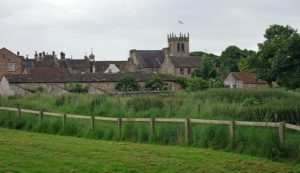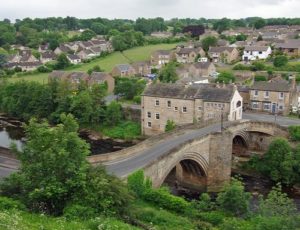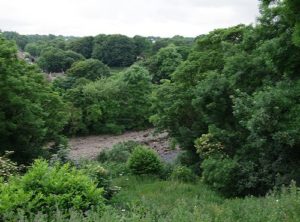This is one of the largest castles in the north of England, set high above the River Tweed.
Guy de Baliol was granted land here by William Rufus and built a wood and earthwork fortification. This was soon replaced by a stone castle. When John Baliol, King of Scotland was defeated by Edward I, ownership of the castle passed to the Nevilles, Dukes of Warwick and then by marriage to Richard III. The estate was forfeited to the crown after the unsuccessful Uprising of the North in the C16th. It eventually passed into the ownership of the Vane family who used stone from Barnard Castle to rebuild Raby Castle, leaving it a ruin.
The castle is made up of four wards and surrounded by a curtain wall with towers.
The outer ward to the south was the largest and contained the Market Gate which was the main entrance from the town. This contained the manorial farm and the chapel containing the tombs of the Baliol family. In the mid C14th the outer ward was abandoned apart from the chapel, making the castle smaller and cheaper to run. Now all that remains are a few bumps in the ground and views across to the town.
The main entrance now is through the north gate into the Town Ward. This was a place of refuge for the townsfolk and contained a number of permanent buildings, now ruined foundations along the side of the walls. This contains the sensory garden.
The Middle Ward linked the three other wards of the castle and served as a fortified entry area or barbican through which all visitors to the castle had to pass. It also contained stables and accommodation for the castles officials.
The Inner Ward was the core of the castle containing the keep on top of a motte, great chamber, great hall and kitchens. It is surrounded by a deep ditch. The keep was the main living quarters until the Great Chamber was built in the C15th. Below the keep is the undercroft which was used for storage and contains the well. The bakehouse and kitchen were separate to reduce the risk of fire. They have a separate stone lined cistern to provide them with water.
This is a splendid castle and well worth visiting. It is tucked round the back of Horse Market and not visible from the town itself. The best views are from the bridge across the River Tees.
The Castle is in the ownership of English Heritage and is open daily. The ticket office contains a small shop but there are no refreshments.
DISABLED ACCESS
Disabled visitors can be dropped off by the main gateway. There is some parking in the open area by the castle. The wards are mown grass and there is level access to all parts of the castle. There are steps down into the ditch and unto the keep, although there isn’t a lot to see inside here. There is a lintel into the undercroft. There is a disabled toilet. Carers are admitted free.










